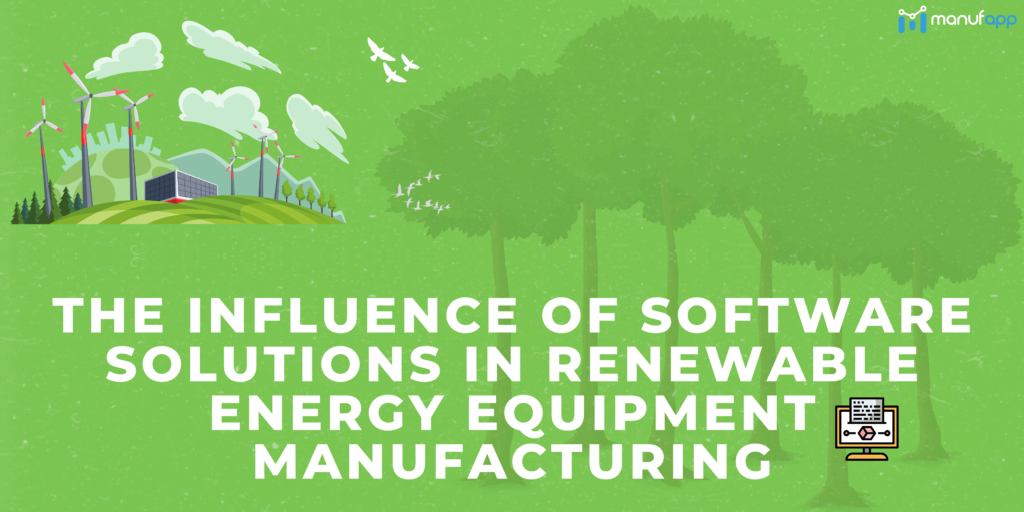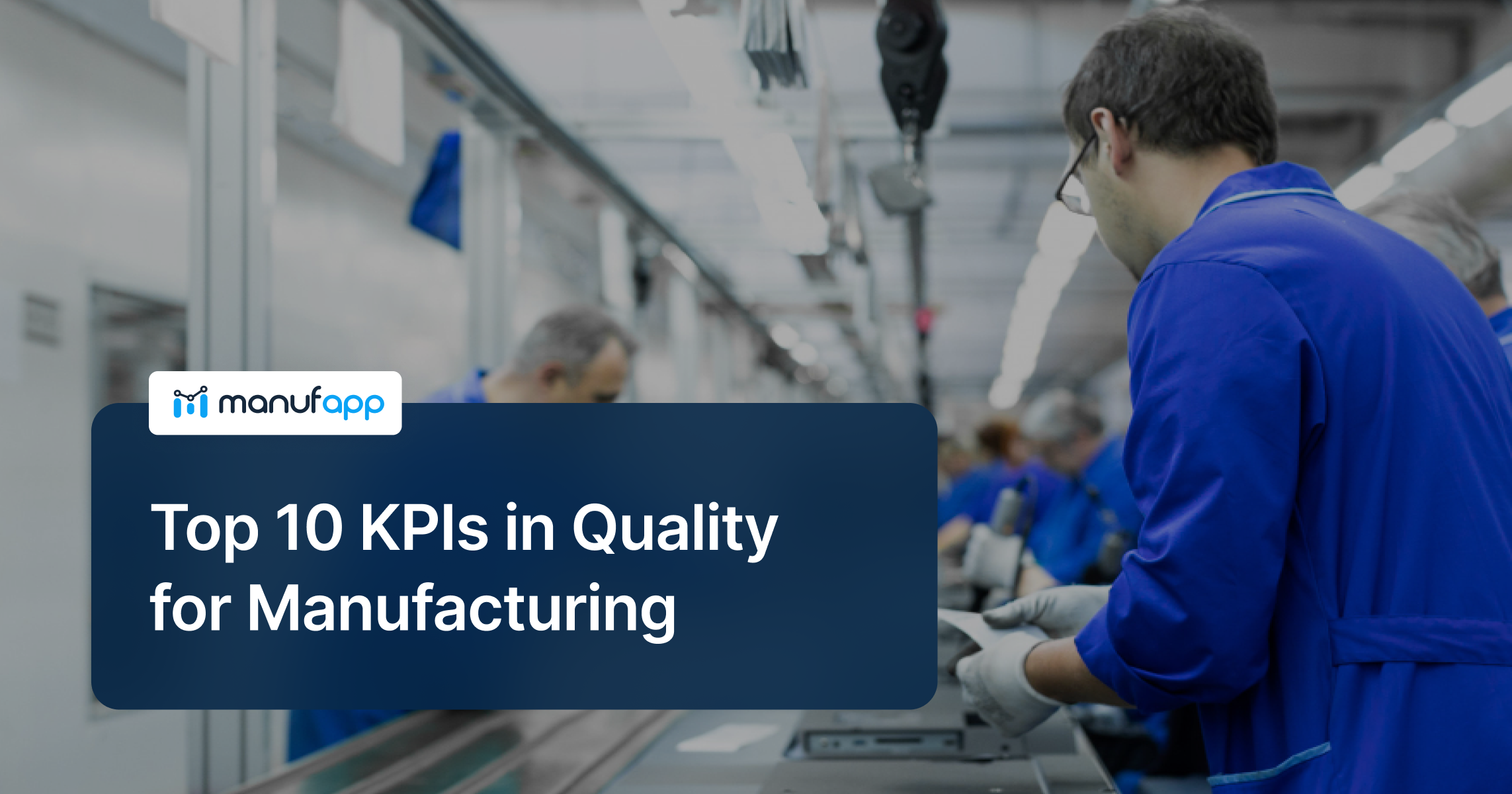In the dynamic landscape of Renewable Energy Equipment Manufacturing, the role of production management software has emerged as a vital catalyst for innovation and efficiency. As the world increasingly turns to renewable energy sources to address environmental concerns, the manufacturing processes behind solar panels, wind turbines, and other green technologies become more critical than ever. Production management software or Production Line Tracking System for manufacturing stands at the forefront of this transformation, revolutionizing how renewable energy equipment is designed, fabricated, and delivered. This blog delves into the profound impact of production management software within the realm of Renewable Energy Equipment Manufacturing, uncovering its pivotal role in optimizing operations, enhancing sustainability, and driving the transition toward a cleaner and more sustainable energy future.
Role of Renewable Energy in Environment
Renewable Energy Equipment plays a crucial role in safeguarding the environment by harnessing clean and sustainable sources of energy. These technologies, such as solar panels, wind turbines, hydroelectric systems, and bioenergy solutions, contribute significantly to reducing the environmental impact of energy production and consumption. Here’s how Renewable Energy Equipment benefits the environment:
Reduced Greenhouse Gas Emissions: Renewable energy sources generate electricity without emitting harmful greenhouse gases, which are major contributors to climate change. By replacing fossil fuels, Renewable Energy Equipment helps lower carbon dioxide and other pollutant emissions, mitigating global warming effects.
Air and Water Quality Improvement: Unlike fossil fuel combustion, renewable energy production doesn’t release pollutants that contaminate air and water. This contributes to better air quality, reduces smog, and minimizes the adverse health effects associated with poor air quality.
Conservation of Natural Resources: Renewable energy relies on sources like sunlight, wind, and water that are naturally replenished. This reduces the depletion of finite fossil fuel resources and preserves ecosystems and biodiversity from the environmental damage associated with resource extraction.
Minimal Land Disruption: Many renewable energy systems, such as solar panels and wind turbines, require less land compared to traditional energy infrastructure. This minimizes habitat destruction and preserves valuable agricultural and natural areas.
Water Conservation: Renewable energy technologies consume less water than conventional power plants, particularly important in regions facing water scarcity. Hydroelectric and solar energy systems, for instance, utilize water more efficiently.
Mitigation of Environmental Risks: Renewable energy reduces the risk of catastrophic events associated with fossil fuel extraction, transportation, and storage, such as oil spills, accidents, and contamination.
Long-term Energy Security: By diversifying the energy mix, Renewable Energy Equipment enhances energy security and reduces dependence on imported fossil fuels, which can be subject to price volatility and geopolitical tensions.
Community Empowerment: Renewable energy projects often bring economic benefits to local communities through job creation, increased property values, and revenue generation.
Global Sustainability Goals: The deployment of Renewable Energy Equipment aligns with international sustainability initiatives like the United Nations’ Sustainable Development Goals and the Paris Agreement, fostering a more sustainable future for generations to come.
In essence, Renewable Energy Equipment not only generates clean and reliable power but also plays a pivotal role in preserving the planet’s ecosystems, mitigating climate change, and promoting a healthier and more sustainable environment for current and future generations.
With reference to the data from *InvestIndia, India stands 4th globally in Renewable Energy Installed Capacity (including Large Hydro), 4th in Wind Power capacity & 4th in Solar Power capacity (as per REN21 Renewables 2022 Global Status Report).The country has set an enhanced target at the COP26 of 500 GW of non-fossil fuel-based energy by 2030.
Manufacturing process followed in Renewable Energy Equipment production
The manufacturing process behind Renewable Energy Equipment is a sophisticated and dynamic endeavor, driven by innovation and sustainability. It encompasses a series of intricate stages that transform raw materials into cutting-edge products that harness and harness and deliver clean energy. Here are the key steps in the manufacturing process followed in Renewable Energy Equipment production.
Design and Engineering:
Detailed design and engineering plans are developed based on the specific type of renewable energy equipment, such as solar panels, wind turbines, or hydroelectric systems.Engineers create schematics, 3D models, and simulations to optimize equipment performance and efficiency.
Material Sourcing and Procurement:
Raw materials required for renewable energy equipment, such as photovoltaic cells, turbine blades, or hydroelectric components, are sourced from suppliers. Quality and sustainability of materials are ensured to meet industry standards.
Component Fabrication:
Specialized manufacturing processes are employed to fabricate key components, such as solar cells, wind turbine blades, and hydroelectric generators. Precision machining, molding, and cutting techniques are used to create components with desired specifications.
Assembly and Integration:
Components are assembled to create the main structure of the renewable energy equipment. Mechanical, electrical, and electronic components are integrated to ensure seamless functionality.
Quality Control and Testing:
Rigorous quality checks are performed throughout the manufacturing process to ensure components meet industry standards and design specifications. Testing includes performance evaluation, stress testing, and quality assurance to identify and address any defects.
System Integration and Optimization:
Different subsystems are integrated to form a complete renewable energy system, such as a solar photovoltaic array or a wind farm. The system’s performance is optimized through advanced control systems and monitoring technologies.
Power Conversion and Conditioning:
Electrical components, such as inverters or converters, are added to convert the generated energy into usable electrical power. Power conditioning ensures that the output energy is consistent and compatible with the grid or storage systems.
Final Inspection and Packaging:
A final inspection is conducted to verify the overall quality, performance, and safety of the renewable energy equipment. Equipment is carefully packaged to protect it during transportation and installation.
Transportation and Installation:
The manufactured equipment is transported to its intended location, whether it’s a solar installation, wind farm, or hydroelectric plant. Skilled technicians and engineers install and commission the equipment to ensure proper functionality.
Operation, Monitoring, and Maintenance:
Once operational, renewable energy equipment is continuously monitored for performance, efficiency, and any potential issues. Regular maintenance and servicing are conducted to ensure optimal operation and longevity.
End-of-Life Considerations:
Sustainable practices are employed for the end-of-life management of renewable energy equipment. Recycling and disposal of components are carried out responsibly to minimize environmental impact.
Benefits of Implementing cloud-based solutions in the Renewable Energy Equipment industry
The manufacturing process for Renewable Energy Equipment involves a combination of advanced technology, engineering expertise, and quality control to produce reliable and efficient equipment that harnesses clean and sustainable sources of energy.
Scalability and Flexibility:
Cloud solutions allow for easy scalability, accommodating the industry’s growth and changing demands for renewable energy equipment.
Manufacturers can expand production capacity or launch new product lines without the need for significant infrastructure investment.
Cost Savings:
Cloud-based solutions eliminate the need for extensive on-premises hardware and maintenance costs.
Pay-as-you-go pricing models reduce upfront capital expenditures and provide cost predictability.
Remote Access and Collaboration:
Cloud platforms enable remote access to data and applications from anywhere, facilitating collaboration among geographically dispersed teams.
Engineers, designers, and stakeholders can collaborate on projects in real time, improving efficiency and decision-making.
Real-time Data Insights:
Cloud-based solutions offer real-time data analytics and insights into production processes, equipment performance, and energy efficiency.
Manufacturers can make informed decisions, optimize operations, and identify areas for improvement.
Faster Innovation and Development:
Cloud infrastructure accelerates product development cycles by providing fast access to computational resources and simulation capabilities.
Rapid prototyping and testing of new renewable energy equipment designs become more feasible.
Remote Monitoring and Maintenance:
Cloud-enabled remote monitoring allows for real-time tracking of equipment performance and health.
Predictive maintenance algorithms can identify potential issues before they lead to downtime, reducing operational disruptions.
Enhanced Security and Compliance:
Cloud providers offer advanced security measures, including encryption, access controls, and data backups, to safeguard sensitive production and customer data.
Compliance with industry regulations and standards is easier to maintain.
Reduced Environmental Impact:
Cloud-based solutions align with the renewable energy industry’s environmental goals by reducing the need for on-site data centers and energy-intensive infrastructure.
Manufacturers contribute to sustainability efforts by leveraging more efficient and eco-friendly computing resources.
Disaster Recovery and Business Continuity:
Cloud solutions provide robust disaster recovery capabilities, ensuring data and applications are backed up and can be quickly restored in case of an unforeseen event.
Business continuity is maintained even during disruptions.
Integration with IoT and Analytics:
Cloud platforms seamlessly integrate with the Internet of Things (IoT) devices and sensors used in renewable energy equipment.
Data collected from sensors can be analyzed in the cloud to optimize equipment performance and energy generation.
Global Reach and Accessibility:
Cloud-based solutions enable easy access to data and applications across different regions and time zones.
Manufacturers can serve a global customer base efficiently and effectively.
Regulatory Updates and Compliance:
Cloud solutions can be updated to adhere to changing industry regulations and standards, ensuring ongoing compliance without significant manual effort.
By harnessing the capabilities of cloud-based solutions, the Renewable Energy Equipment industry can drive innovation, optimize operations, and contribute to the widespread adoption of sustainable energy solutions on a global scale.
Our below two blogs will highlight more on the benefits of MES to your organization. Please have a look on them as well.
Why do Manufacturers need Manufacturing Execution System in addition to Traditional ERP
Reasons To Implement A Smart Manufacturing Integration Platform
Conclusion
In conclusion, the integration of production management software into the Renewable Energy Equipment industry marks a pivotal step towards a more sustainable and efficient future. By seamlessly orchestrating every facet of the manufacturing process, from design and procurement to assembly and quality assurance, this technology empowers manufacturers to optimize operations, minimize waste, and ensure the highest standards of quality and performance. As the renewable energy sector takes center stage in the global shift towards cleaner and greener solutions, production management software emerges as a key enabler, driving innovation and propelling the industry towards new heights. By embracing this transformative tool, stakeholders in this sector are not only shaping a more eco-friendly world but also revolutionizing the way we harness and utilize renewable energy for generations to come.
*/https://www.investindia.gov.in/sector/renewable-energy





